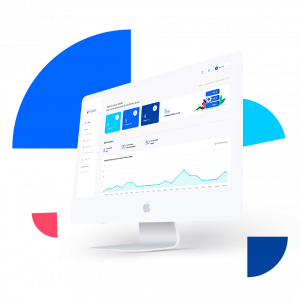
If you’re looking for a way to better understand your customers and their purchasing behavior, RFM analysis is an excellent place to start. This powerful tool allows you to segment your customer base based on recency, frequency, and monetary value, giving you valuable insights into the behavior of different groups of customers.
What is RFM Analysis?
RFM analysis is a data-driven approach to customer segmentation. By analyzing customer data in terms of Recency (how recently they made a purchase), Frequency (how often they make purchases), and Monetary value (how much they spend), you can gain insights into the behavior of different groups of customers.
How Does RFM Analysis Work?
To perform RFM analysis, you need to collect data on your customers’ purchase history, including the date of their last purchase, the number of purchases they’ve made, and the total amount they’ve spent. You can then rank customers on each of these metrics and assign them a score between 1 and 5 for each metric.
For example, a customer who made a purchase in the last week would be assigned a high score for recency, while a customer who hasn’t made a purchase in several months would be assigned a low score. Similarly, a customer who has made many purchases and spent a lot of money would be assigned a high score for frequency and monetary value, while a customer who has made only a few purchases and spent little money would be assigned a low score.
Once you’ve assigned scores to each customer, you can use these scores to segment your customers into different groups based on their behavior. For example, you might have a group of high-value customers who make frequent purchases, a group of low-value customers who make infrequent purchases, and a group of recent customers who haven’t yet made a lot of purchases.
How Can You Use RFM Analysis to Improve Your Business?
Once you’ve segmented your customers using RFM analysis, you can use this information to tailor your marketing and sales strategies to each group.
For example, you might create different types of content or promotions to target each group.
If you have a group of high-value customers who make frequent purchases, you might focus on providing them with personalized offers and promotions. You might also consider creating a loyalty program to reward them for their continued business.
If you have a group of recent customers who haven’t yet made a lot of purchases, you might focus on providing them with educational content that helps them understand the value of your products or services. You might also consider offering them a special promotion to incentivize them to make a purchase.
By using RFM analysis to segment your customers and tailor your marketing and sales strategies to each group, you can improve your overall customer retention and satisfaction, which can ultimately lead to increased revenue and growth for your business.
Which martech tool would be needed to carry out RFM analysis properly?
By using a Customer Data Platform (CDP) you could effectively perform RFM analysis. A CDP is a software tool that allows you to collect, analyze, and segment customer data from multiple sources, including your website, social media channels, customer support interactions, or any other that you might have.
To perform RFM analysis using a CDP, you first need to integrate your customer data into the platform by connecting your website analytics tool, email marketing platform, CRM system, and any other database with customer information that you have available to the CDP. Once integrated, the CDP will automatically assign scores to each customer based on their behavior in terms of Recency, Frequency, and Monetary value.
Using the insights gained from RFM analysis, you can segment your customers into different groups and tailor your marketing and sales strategies to each group. By using a CDP to perform RFM analysis, you can gain a more comprehensive understanding of your customers’ behavior, make informed business decisions, and improve your overall performance.
WHY FLYDE?
Do you want your company to move on to the next level? A CDP is the key tool that will allow you to maximize the potential of your data and grow your business. Working like the big multinationals in the market, which already have this type of software, and having control over all your data is now very simple.
Moreover, if you do not have IT or Data Scientist teams, this tool will allow you to outsource this function. And if you have them but want to reduce their workload and give more autonomy to your marketing and business teams when it comes to working with data, implementing an easy-to-use CDP would be the best option for your company. It will allow any single member of your company to use it, as this softwares are prepared for them.
Start taking control of your data today.
Schedule a meeting with one of our experts and discover how FLYDE can help your company achieve its goals.


